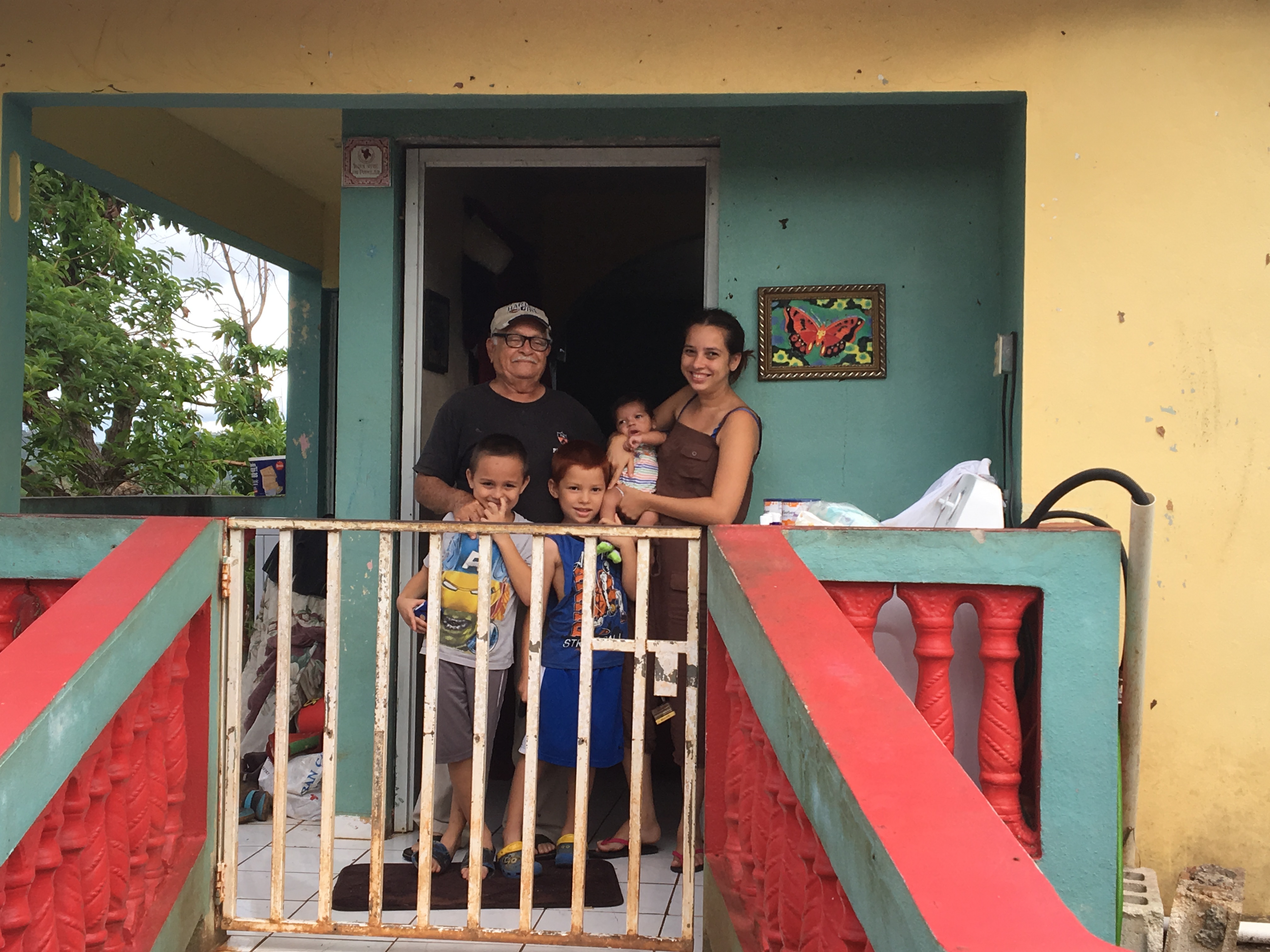Click. The trees. This picture looks the same as all the rest.
Click. More wreckage. Maybe it will look better from this angle.
Click. An elderly man, two children, and a woman holding a newborn baby. Oh my goodness, they are beautiful.

Without knowing anything about this family except that they were breathtaking, I snap a photo of them. We move on to the next house, but I know that a piece of my heart stayed with the family. I just didn’t know why until Professor Reyes-Santos told us their story.
The baby’s name is Isaac. His mother went into labor during Hurricane Maria. The roads were blocked with fallen trees and debris. Wasting no time, the neighbors came together to clear a path to ensure a safe birth at the nearest hospital.
I go back to this town every couple of days and fondly gaze over the photo of this Puerto Rican family. With the events of today, it is very easy to lose hope. There is suffering on all parts of the globe, the people in power are ill-fit to lead, and Mother Nature is begging us to take better care of her Earth. Before I went to Puerto Rico, I believed that humanity had failed its purpose – to love, protect, and serve one another – and all that was left was for it to crumble.
As I sit in my candlelit room in February 2018, three months after the trip, going over my notes, I see the word “community” on almost every single page, and I realize how wrong I was.
Everywhere we went, a sense of unity and love for one’s people was prominent, and it pushed citizens to help one another and become stronger. Puerto Ricans came together as soon as Hurricane Maria hit and got to work.
When the strongest government in the world did next to nothing to help its people, the people took action to help one another. They cleaned their highways. They created roads when mudslides made transportation dangerous. They cooked and gathered clean water for one another. Churches became distribution centers as well as shelter. Puerto Rican relief organizations such as the 100 x 35 and Western Solidarity Brigade trekked through the dangerous mountain roads to get to families who needed help even after the military determined those regions as inaccessible.
To our delightful surprise, my peers and I were offered food, water, shelter, and kindness from those who were on the verge of losing everything. The people we were there to help became our strength.
Through the destruction, I saw resilience. Through the pain and sorrow, I saw beauty.
I spent no more than fifteen minutes in that small Puerto Rican town, and I spent no more than two minutes interacting with that family. But their story will continue to inspire me and give me hope.
